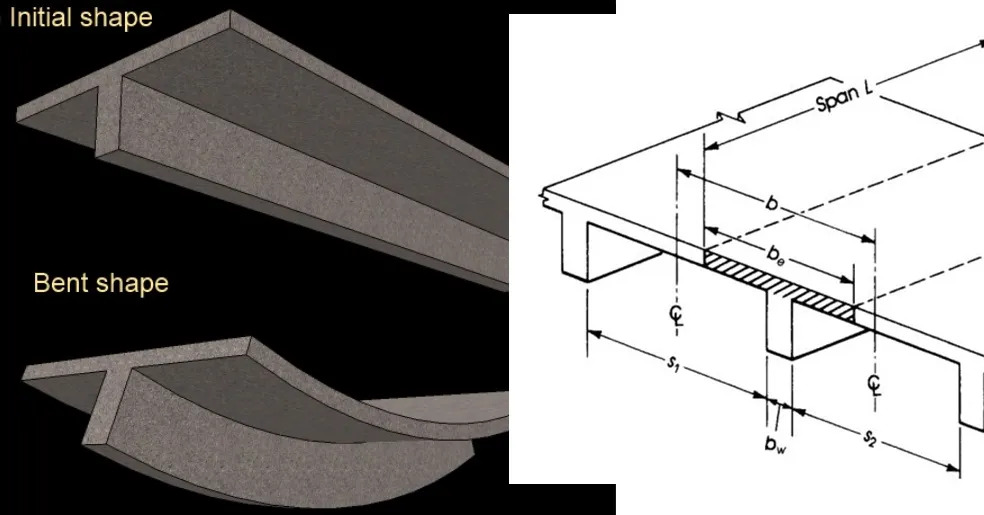In the realm of structural engineering, T-beams stand out as a versatile and widely used structural element that offers efficient load-bearing capabilities. Derived from their distinctive T-shaped cross-section, these beams are employed in a variety of construction projects, ranging from buildings and bridges to industrial structures. In this article, we explore the design principles, applications, and advantages of T-beams, shedding light on their significance in the world of structural engineering.
Design and Cross-Section:
T-beams derive their name from their cross-sectional shape, resembling the letter ‘T.’ The horizontal section at the top, known as the flange, is responsible for resisting bending moments, while the vertical section, called the stem or web, provides shear resistance. This combination allows T-beams to efficiently distribute and support loads, making them a popular choice in structural design.
Reinforcement Techniques:
T-beams are often reinforced with steel to enhance their strength and load-carrying capacity. Reinforcement is strategically placed in the flange and web to resist tension and compression forces. The placement and quantity of reinforcement depend on the specific structural requirements. Ensuring that the T-beam can withstand the expected loads and maintain structural integrity.
Applications in Building Construction:
T-beams find extensive use in building construction, where they serve as essential components in floor and roof systems. Their ability to span longer distances without the need for additional support columns makes them particularly advantageous in creating open and flexible interior spaces. T-beams contribute to efficient load distribution and help architects achieve diverse design objectives.
Bridge Design and Construction:
Bridges, both highway and pedestrian, often incorporate T-beam due to their ability to span over supports with stability and efficiency. The design principles of T-beam make them suitable for various bridge configurations, providing a cost-effective solution for engineers while ensuring the safety and durability of the structure.
Advantages of T-Beams:
T-beams offer several advantages that contribute to their widespread use in construction projects. Their efficient use of materials, ease of fabrication, and ability to span longer distances with minimal support columns make them a preferred choice for engineers. Additionally, the clear separation between the flange and stem allows for straightforward construction and simplifies the installation process.
Economical and Material Efficiency:
T-beam exhibits a high level of material efficiency, using concrete and steel judiciously to meet structural requirements. This efficiency translates into cost savings in both material procurement and construction. Making T-beams an economical choice for a variety of structural applications.
Versatility in Design:
T-beams offer architects and engineers considerable versatility in design. Their adaptability to various configurations and load requirements allows for creative and efficient solutions in response to specific project needs. This flexibility ensures that T-beams can be tailored to meet the aesthetic and functional objectives of diverse construction projects.
Challenges and Considerations:
While T-beams offer numerous advantages, their design and implementation require careful consideration. Engineers must account for factors such as shear and bending moments, proper placement of reinforcement, and potential torsional effects. Adhering to established design codes and conducting thorough structural analysis ensures the successful integration of T-beams into construction projects.
Conclusion:
T-beams stand as a testament to the ingenuity of structural engineering, providing a reliable and efficient solution for a wide range of construction applications. Their versatility, cost-effectiveness, and material efficiency make them a staple in building and bridge construction. As the field of structural engineering continues to evolve. T-beams remain a foundational element, playing a crucial role in creating structures that are not only functional but also aesthetically pleasing and economically viable.

